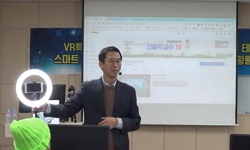정부는 학교주변의 보건, 위생, 학습환경과 학생들의 원만한 정서적 발달을 도모하기 위한 제도의 필요성이 제기되어 정부는 1967년에 학교환경위생정화구역(이하 “정화구역”) 제도를 도...
http://chineseinput.net/에서 pinyin(병음)방식으로 중국어를 변환할 수 있습니다.
변환된 중국어를 복사하여 사용하시면 됩니다.
- 中文 을 입력하시려면 zhongwen을 입력하시고 space를누르시면됩니다.
- 北京 을 입력하시려면 beijing을 입력하시고 space를 누르시면 됩니다.

학교환경위생정화구역 제도의 개선방안에 대한 연구: 2001~2011년간 정화구역 내 금지행위 및 시설 관련 심의현황 및 해제율 추이 비교분석 = Future Direction of School Environmental Sanitation and Cleanup Zone System
한글로보기https://www.riss.kr/link?id=A106445574
- 저자
- 발행기관
- 학술지명
- 권호사항
-
발행연도
2013
-
작성언어
-
- 주제어
-
KDC
331
-
등재정보
KCI등재
-
자료형태
학술저널
-
수록면
221-242(22쪽)
- 제공처
-
0
상세조회 -
0
다운로드
부가정보
국문 초록 (Abstract)
정부는 학교주변의 보건, 위생, 학습환경과 학생들의 원만한 정서적 발달을 도모하기 위한 제도의 필요성이 제기되어 정부는 1967년에 학교환경위생정화구역(이하 “정화구역”) 제도를 도입하여 시행하고 있다. 정화구역에서의 행위 및 시설 제한은 건전한 교육환경을 조성하는 데 필요한 법이기는 하나 다른 한편 직업의 자유나 재산권 등 국민의 재산권을 제한하는 문제를 가지고 있으므로 현행제도 의 문제점을 검토하고 최근 10년(2001년 2011년)간 정화구역 내 금지행위 및 시설 관련 심의현황 및 해제율의 추이를 비교분석하여 향후 정화구역 제도의 효율적 개선방안을 제시하고자 한다. 본 연구는「학교보건법」의 “학교환경위생정화구역” 제도와 “정화구역 내 금지행위 및 시설”에 대 한 관련 법규, 법제처 질의회신 자료, 교육과학기술부 발간자료 등의 다양한 문헌자료를 통해 관련 법 령의 문제점을 분석하고자 한다. 또한, 사례분석으로 최근 10년(2001년 2011년)간 정화구역 내 금지 행위 및 시설 관련 심의현황 및 해제율의 추이를 비교분석하여 정화구역제도의 문제점과 개선방안을 제시하고자 한다. 정화구역 제도의 문제점은 다음과 같다. 첫째, 정화구역 내 금지행위 및 시설을 획일적 거리로 설정하여서 하므로 업종별로 세분화해야 할 필요성이 있다. 둘째, 정화구역 안에서 금지되고 있는 일부 행위나 시설이 학교급별과 관계없이 획일적으로 적용된다. 셋째, 학교환경위생정화위원회의 구성 및 운영에 있어서 법률전문가의 참여가 보장되어 있지 않고, 심사 시 일정한 기준이 있다기보다는 학교주변 지역의 사정에 따라 달라질 수 있으므로 형평성 논란이 제기되고 있다. 넷째, 학교환경위생정화구역의 관리가 부서 간 상호 긴밀하게 연계가 잘 이루어지지 않고 있다. 정화구역 제도의 근거가 되는 학교보건법이 ‘학교의 보건관리’와 ‘학교의 환경위생정화’라는 서로 이질적인 내용을 동시에 규정하고 있으므로 현재 학교보건법에서 규정하고 있는 정화구역 제도에 관한 사항을 분리시켜 가칭 “교육환경보호법”을 제정할 필요가 있다. 교육환경보호법은 그 목적을 학교 주변의 교육환경 보전으로 분명하게 한정하고, 기존 학교보건법 중 정화구역 제도에 관한 사항을 포함하되, 정화구역 안에서의 금지행위 및 시설 기준을 좀 더 세분하여 구체적으로 명시할 필요가 있으며, 청소년보호와 관련되는 타 법률과의 상호관계도 명확히 할 필요가 있다.
다국어 초록 (Multilingual Abstract)
The government established School Environmental Sanitation and Cleanup Zone (hereafter referred to as the Cleanup Zone ) in 1967 to protect schools’ health, sanitation and learning environment. While restricting certain activities and facilities in ...
The government established School Environmental Sanitation and Cleanup Zone (hereafter referred to as the Cleanup Zone ) in 1967 to protect schools’ health, sanitation and learning environment. While restricting certain activities and facilities in the cleanup zone is necessary, it has also limited the freedom of business and the property right of people to some extent. This study therefore aims to explore wa ys to improve the Cleanup Zone system effectively by reviewing current problems of the system and analyzing trends in the cancellation rate and deliberation cases regarding the prohibited activities and facilities in the Cleanup Zone in the decade of 2001-2011. The problems in the laws related to the Cleanup Zone system and in the prohibited activities and facilities in the Zone were analyzed through a literature review including documents published by the Ministry of Education, Science and Technology, replies to inquiries of Ministry of Government Legislation, and laws related to the prohibited activities and facilities in the Cleanup Zone. In addition, ways to improve the Cleanup Zone system effectively were explored by reviewing current problems of the system and analyzing trends in the cancellation rate and deliberation cases regarding the prohibited activities and facilities in the Cleanup Zone for the decade of 2001-2011. The current problems of the Cleanup Zone system were as follows: First, the prohibited activities and facilities in the Cleanup Zone should be subdivided according to the type of business since they are not varied by the type of business. Second, the activities and facilities prohibited in the Cleanup Zone are all the same regardless of the school type. Third, the issue of equity is questionable as the participation of a legal expert is not guaranteed in the composition of the Cleanup Zone Committee and the criteriavary depending on the circumstances rather then being consistently applied in the deliberation. Fourth, the inter-organizational cooperation for the management of the Cleanup Zone has not been effective. Since the School Health Act, the legal ground for the Cleanup Zone system, prescribes the matters on both school health management and environmental sanitation cleanup zone, which are two different issues, these two should be separated. A new l w, tentatively titled ‘Educational Environment Protection Act’, a should be legislated with the specific goal of ensuring an educational environment around schools. While it should prescribe the matters related to the cleanup zone, it should also specify criteria for prohibited activities and facilities in the cleanup zone in detail by subdividing them, while simultaneously clearly defining relationships with other regulations on youth protection.
목차 (Table of Contents)
- 국문초록 Ⅰ. 서론 Ⅱ. 연구방법 Ⅲ. 학교환경위생정화구역 제도의 개념과 변천과정 Ⅳ. 현행 제도상 문제점과 개선방안 Ⅴ. 결 론 참고문헌 abstract
- 국문초록 Ⅰ. 서론 Ⅱ. 연구방법 Ⅲ. 학교환경위생정화구역 제도의 개념과 변천과정 Ⅳ. 현행 제도상 문제점과 개선방안 Ⅴ. 결 론 참고문헌 abstract
동일학술지(권/호) 다른 논문
-
만성 관절염 노인환자의 주관적 건강상태와 우울 간의 관계에 미치는 사회적 자본의 상호작용 효과
- 한국보건사회학회
- 김은령
- 2013
- KCI등재
-
소득계층과 주관적 계층인식에 따른 의료이용: 『한국의료패널』자료를 중심으로
- 한국보건사회학회
- 최령(Ryoung Choi)
- 2013
- KCI등재
-
동거형태가 음주행위에 미치는 영향: 성별과 연령에 따른 차별적 효과
- 한국보건사회학회
- 임정재(Lim, Jeong-Jae)
- 2013
- KCI등재
-
기혼여성의 우울변화에 영향을 미치는 요인- 가구주 여부와 빈곤 여부를 중심으로 -
- 한국보건사회학회
- 강석임(Seok-im Kang)
- 2013
- KCI등재




 스콜라
스콜라



